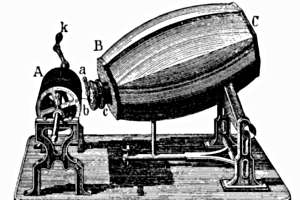Last summer, QUEST told you about how scientists at Lawrence Berkeley National Lab have developed a technology to playback old audio recordings using visual scans. Along with bringing to life the wax cylinders we featured in our TV story, the Berkeley technology helped the world hear, for the first time ever, the oldest known sound recordings ever made. Now the historians who unearthed those recordings have discovered that they've been playing them all wrong.

The recordings were made by a phonautograph, invented by a Frenchman named Léon Scott more than 20 years before Edison came up with the phonograph. The technology worked by scratching sound waves onto sheets of paper covered with lampblack. Last year, historians used the Berkeley Lab's "visual stylus" to replay an 1860 recording of what they thought was a young girl singing the French song "Au Claire De La Lune". Since then, they've realized that they were actually playing the recording at double speed. Instead, it's likely the inventor himself doing the singing. You can hear both version at FirstSounds.org, or listen to an interview with the historians from NPR. It turns out learning to play old sounds isn't the only challenge -- we have to know how to play them right!